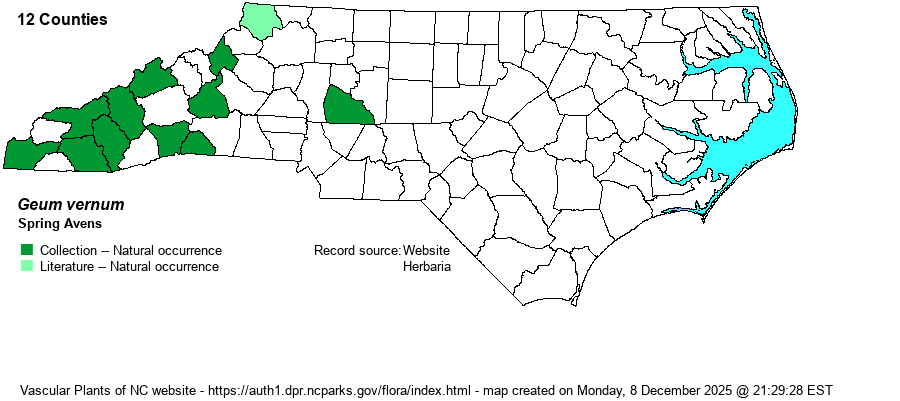| Author | (Rafinesque) Torrey & A. Gray | |
| Distribution | Present over the southern and central Mountains, with records from 10 counties. Should occur in the far northern Mountains, as this is a Midwestern and Northern species. An old, disjunct record for Rowan County in the central Piedmont. The Digital Atlas of the Virginia Flora considers that nearly all of its many Mountain and Piedmont records may be of introduced populations and treats them as "Uncertain" provenance. The same can probably be said for most NC records, though it is best to consider them as natural occurrences, for now.
This is a Midwestern species, ranging from NY west to southeastern NE, and south to OK, AR, northern AL, and the Appalachians. | |
| Abundance | Rare but possibly increasing in the southern half of the Mountains, and likely of historical occurrence in the Piedmont. This is now a Watch List species. | |
| Habitat | This is originally a species of rich forests and shaded floodplains, but it now occurs along wet creeksides, damp edges of roads, and in some other disturbed areas, though normally where damp to wet. | |
| Phenology | Blooms in the spring (unlike many others in the genus), only in April and May; fruits in Nay and June. | |
| Identification | This is a shorter species than most in the genus, mainly about 1.5 feet tall, erect or ascending, rather hairy, and it may have several branches from the base. The lower stem and basal leaves are pinnately divided into many leaflets, but farther up the stem, the leaves are mostly trifoliate to only somewhat lobed. There are short flowering branches along the upper stem, with each branch tip containing a small flower. The sepals are reflexed, but the 5 petals are very short, rounded, bright to medium yellow, but barely 1/10-inch long; as the green receptacle occupies most of the flower, the flower at much distance will look like it has no petals at all. It has a great resemblance to several species of buttercups (Ranunculus), though those species do not have narrowly pinnately dissected leaves, but typically have dissected basal or lower leaves that are palmate. Take great care in identifying this rare species, and make sure you do not have a buttercup. | |
| Taxonomic Comments | None
| |
| Other Common Name(s) | None | |
| State Rank | S2? | |
| Global Rank | G5 | |
| State Status | W7 | |
| US Status | | |
| USACE-agcp | FAC link |
| USACE-emp | FACU link |

